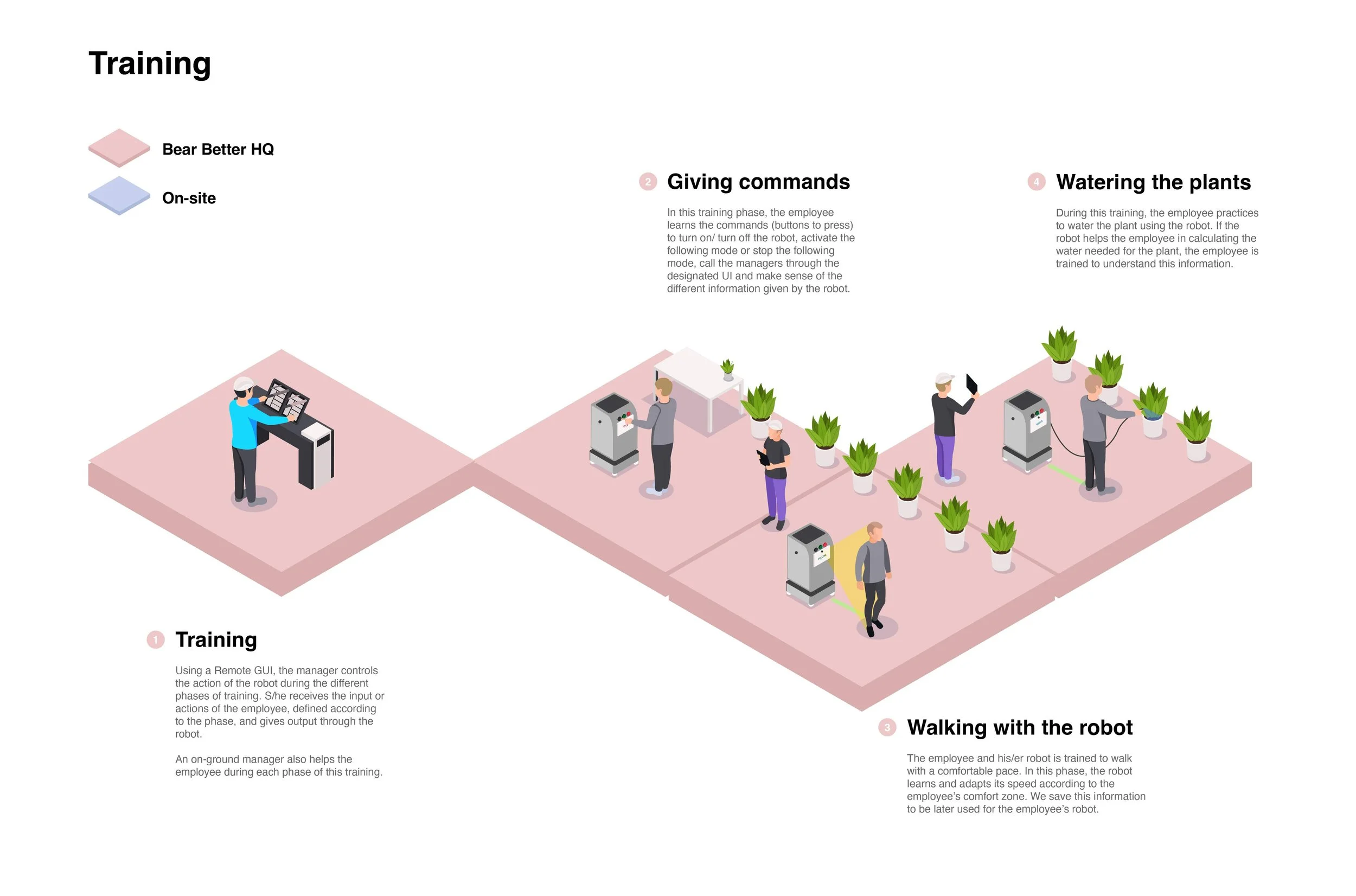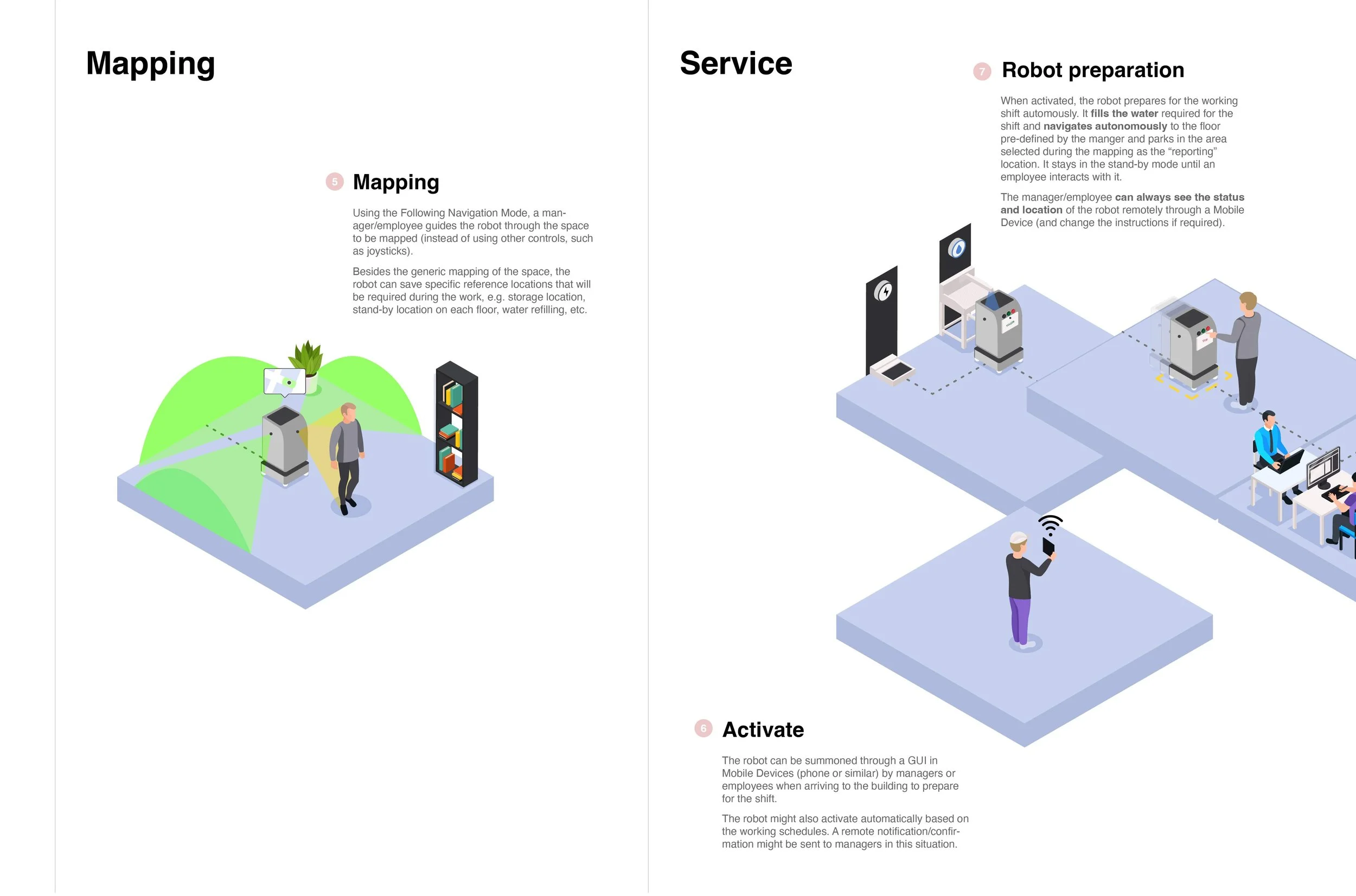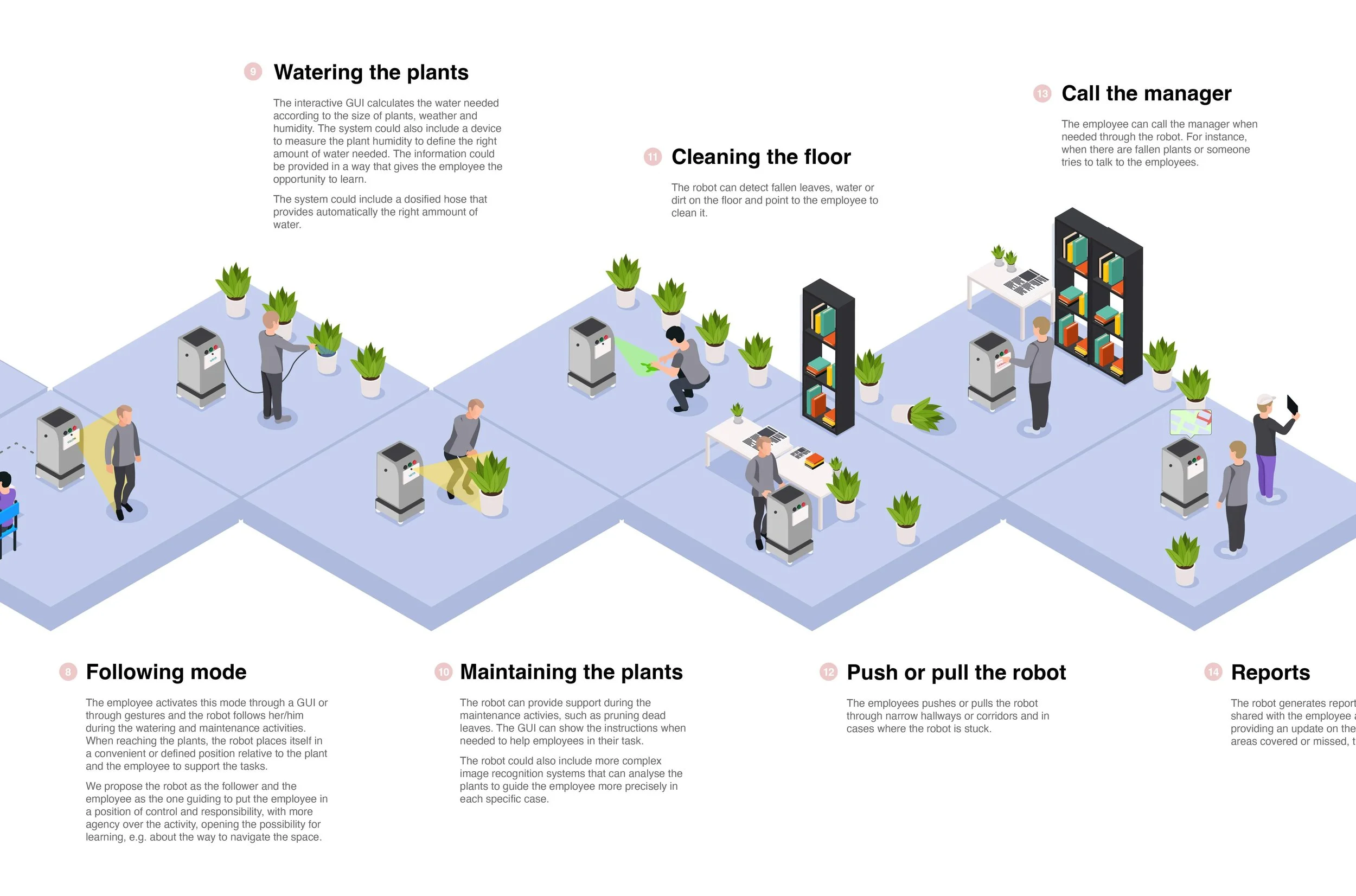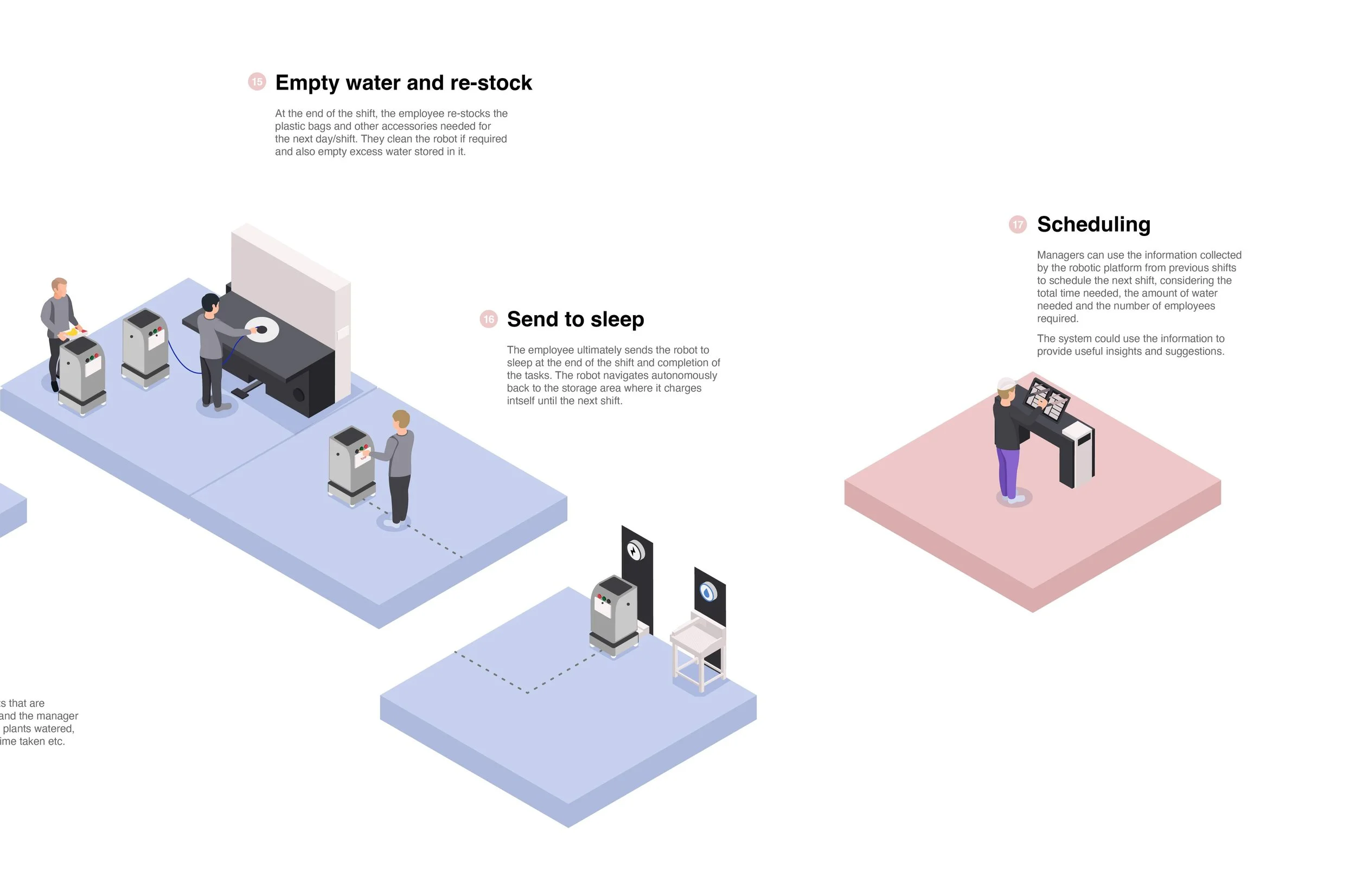Exploring Robotic Support for Employees with Disabilities
We investigated the potential of a mobile robot platform to assist employees with cognitive disabilities, with a strong focus on ethical considerations, and aiming to enhance and empower their personal and professional growth
Company
Naver Labs Europe (In-house)
Year
2020
Role
Ethnographic observational study, co-organizer and facilitator of participatory design workshop, co-responsible for service concept design.
Team
Shreepriya Gonzalez Jimenez, Tommaso Colombino, Yesook Im, Seijin Cha.
Category
Robotics
Problem statement
We were invited to envision how a mobile robot platform developed by Naver Labs Europe could enhance the work experience of employees with cognitive disabilities. These employees are part of a company dedicated to fostering their integration and professional development. We approached this challenge by deeply understanding the company’s values, employees’ activities, and all stakeholders’ perspectives.
ETHNOGRAPHIC STUDY
We conducted observations of the company’s activities and interviewed key personnel to understand the socio-technical context for potential design interventions.
We conducted observations of various activities in the organisation (a coffee shop, printshop, flower shop, bakery, plant maintenance, and local delivery) and interviewing different stakeholders to understand the socio-technical context and identify areas for potential design interventions. The company demonstrates the employability of disabled workers by simplifying tasks and creating a structured division of labor, successfully integrating over two hundred employees with developmental disabilities (DDs) into mostly profitable operations. Despite its success, we identified potential limitations in the current work setup, regarding opportunities for employee creativity and personal growth. This led us to consider how robots could enhance employees’ work experiences without compromising service efficiency. We saw the opportunity for amplifying social and professional skills rather than merely optimizing processes, enabling the undertaking of complex or flexible tasks not currently accessible to employees.
PARTICIPATORY DESIGN SESSIONS
We facilitated two participatory design sessions involving managers from the organisation employing people with disabilities, as well as engineers and designers developing the robot.
In these sessions, we introduced our robotic platform’s capabilities. Participants identified specific challenges within selected services of the organisation employing people with disabilities, but also brainstormed and proposed solutions that were aligned with our robot’s capabilities. This helped us select the service where we identified the best opportunities for the introduction of the robot, i.e., the plant management service. In this service, employees with disabilities maintain the plants of large office buildings, e.g, cutting their leaves and watering them.
The participatory sessions also included a value elicitation exercise, presenting fictional stories situated in a future where the robots have been deployed, to engage stakeholders in exploring potential risks associated with the introduction of robots and understand their ethical perspectives. These sessions were crucial to balance our technological aspirations with the unique business model and the needs of employees with disabilities, maintaining a focus on societal impact and ethical considerations of deploying robots in workplaces for people with developmental disabilities.
OUR RESEARCH QUESTION
How could we support the development of employees with disabilities and enhance their work experience when doing plant maintenance through the use of a mobile robotic platform?
THE CONCEPT
We proposed a concept where robots act as assistants, providing physical, cognitive, and (access to) emotional support.
This approach not only amplifies the capabilities of disabled employees but also aligns with the ethical considerations and stakeholder expectations understood during our research. The selected service was that one of a plant management scenario. We analysed each task in the service to preserve or enhance the learning opportunities while respecting the business objectives. Our concept has a focus on physical support, particularly relevant for the activity, as it involved carrying several tools and large buckets of water. At the same time, we proposed a level of cognitive support but providing agency to make decisions. Finally, employees could use the robot to get access to their managers in emergencies or whenever requiring assistance.
DESIGNING THE INTERACTIONS WITH THE ROBOT
We developed a framework for the selection of the most suitable interaction modalities with a robot.
For each moment in the plant management service, we selected the most suitable interaction modality with the robot. We based this decision on the results of a survey conducted with the employees with disabilities and an analysis of other relevant factors. Considering the complexity of the concept, we developed a framework to analyse and assess the suitability of each interaction modality available in the robot (i.e., integrated or remote GUI, VUI, gestures, physical interaction) in relation to the capabilities of the robot, the task to be completed, the environment, and the required capabilities of the employees.
REFLECTING ON THE PROCESS
The challenges of including the perspective of vulnerable users in the design process.
This project reminded me of the importance of an iterative, human-centered design approach involving all stakeholders. This is particularly relevant and challenging (and in some cases not even possible) when designing for vulnerable users. We should then identify alternative ways to access their voices and experiences, such as relying on proxys or caregivers and adapting existing research methodologies. At the same time, this project introduces the challenges and opportunities of integrating robotics in the workplace, where there is a delicate balance between technological innovation and efficiency, and the preservation of human development and dignity.




